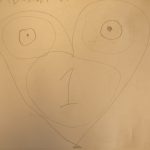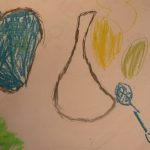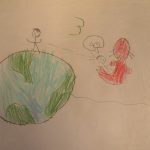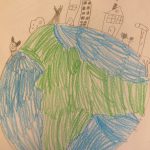The video introduced graduates having similar misconceptions before and after formal knowledge (ex. seasons from earth-sun distance; lunar phases from eclipsing clouds). The clip then focused on Heather’s private theories (ex. peculiar orbit, indirect bounce), confidently holding onto confusing assumptions with interpretive frameworks outliving contradictory instruction. These misconceptions are basic ideas and lingering thoughts arising from experience and association, not limited to perspective drawings or abstract concepts, but depend upon everyday sense perception (where in the first example closer does suggest warmer). Students have firm beliefs or naïve preconceptions through spontaneous interaction with their environments, adapting new ideas to prior knowledge, isolating formal instruction from intuition. Misconceptions are often surprising, pervasive and resilient contingent upon existing frameworks, where students misinterpret common sense (Chi, 2005) with loosely connected reinforcing conceptions that do not match reality. At times misconceptions even share correct propositions, which can be accurate in parts but incomplete affecting ease of removal. Students are not blank slates, and unless sufficiently dissatisfied with old models, are unlikely to accommodate new theories (Confrey, 1990).
In response, Posner et al. define learning as conceptual change, modifying paradigms through assimilation and accommodation, historically valued for problem solving over prediction making, requiring layered adaptation and reconciliation. Learners must face dissatisfaction with anomalies and be presented with intelligible, plausible and extendable alternative frameworks to challenge conceptual ecology (Posner et. al, 1982). Educators need to first probe student understanding, providing counterexamples and critical barriers with different kinds of knowledge, giving time to sort out confusion with expectations. Have students give reasons for answers, redirecting representations to focus attention and understanding belief as arbitrary point of view, having gradual tolerance for inconsistency to reconcile fundamental assumptions. Students learn through peer teaching and correction, straightening ideas with tangible manipulatives, making viable adaptations upon empirical data and reflection. Teachers need to help learners be aware of continual competition between new concepts and old ideas to free them from private universes, giving value to process as well as outcome.
References
Chi, M. T. (2005). Commonsense conceptions of emergent processes: Why some misconceptions are robust. The journal of the learning sciences, 14(2), 161-199.
Confrey, J. (1990). A review of the research on student conceptions in mathematics, science, and programming. Review of research in education, 16, 3-56.
Posner, G. J., Strike, K. A., Hewson, P. W. and Gertzog, W. A. (1982). Accommodation of a scientific conception: Toward a theory of conceptual change. Sci. Ed., 66: 211–227. doi: 10.1002/sce.373066020.






